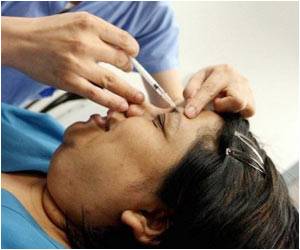Skin aging presents in people as they grow older, and the differences are attributed to ethnicity - skin type, exposures, and genetic factors.

‘Skin ages chronologically and biologically, and the variation among people is ascribed to ethnicity. Wearing sunscreen protects one from skin cancer.’
Read More..




As people are living longer, their skin is not only chronologically, or biologically aging, but it is also being exposed to environmental factors, such as sunlight, which can cause age-related damage to the skin.Read More..
Neelam Vashi, MD, director of the Center for Ethnic Skin at Boston Medical Center, has published a review paper in Clinics in Dermatology that discusses how aging presents in patients, and the differences that are attributed to skin type, exposures and genetic factors.
For the review, the researchers examined 41 peer-reviewed published articles between 1970 and 2018 that focused on aging in ethnic skin through PubMed. The data included in the articles demonstrate that all skin types will show signs of damage from exposure to Ultraviolet rays from the sun, which include skin discoloration, loss of collagen and/or skin cancer.
Here are some key findings from the review:
- Melanin is a key difference in those of light and dark skin types
- Patients of color are more likely to experience changes in pigmentation (dyschromia)
- Key differences in fibroblasts (cells that promote wound healing and collagen production) account for increased skin thickness of African-American patients, resulting in wrinkles that appear several years later than white counterparts
- Patients of East Asian descent have a higher likelihood of experiencing hyperpigmentation, but wrinkles don’t form as early in the aging process
- Patients of Hispanic descent also experience fewer wrinkles earlier in the aging process
- Patients of Caucasian descent (European, North African, Southwest Asian ancestry) more commonly have thinner skin and experience wrinkles, loss of skin elasticity, and reduced lip volume
As a dermatologist, Vashi treats a large number of patients for a variety of skin conditions related to aging. The one treatment she always recommends is UV protection, which helps shield all skin types from the sun’s harmful rays. "Skin cancer is the most common type of cancer in the US, and using sunscreen is an extremely important practice to protect your skin," added Vashi.
Advertisement
- Topical agents, antioxidants, chemical peels and lasers can be effective to treat dyschromia
- Botulinum and toxin and soft-tissue fillers can help treat wrinkles and sagging skin
Source-Eurekalert














